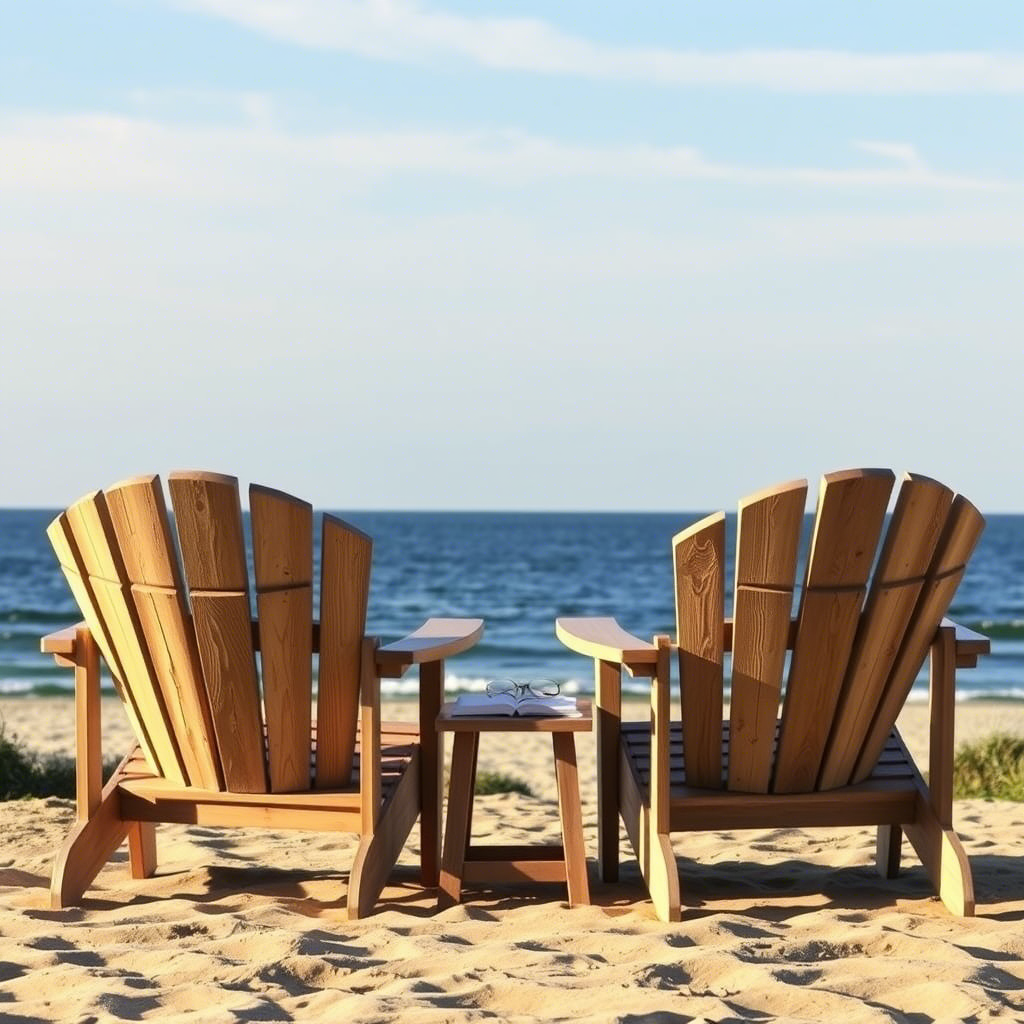LuxCraft’s outdoor furniture stands out for its heavier, more durable construction, utilizing thicker poly lumber and Amish craftsmanship, which appeals to those who value longevity and a sturdy, handcrafted aesthetic. In contrast, Polywood provides a broader selection of styles and colors at a more budget-friendly price point, with lighter designs that prioritize variety, value, and easier mobility for users.
Material Science & Engineering: The Core of Durability
Polywood’s HDPE Innovation
Polywood’s furniture is made from high-density polyethylene (HDPE), a thermoplastic derived from 90% post-consumer recycled plastic (e.g., milk jugs). The material is ground into pellets, mixed with UV-stabilized pigments, and extruded into lumber-like profiles. Key technical specs:
- Density: 0.94 g/cm³, lightweight yet rigid.
- Weather Resistance:
- UV Stability: Pigments are embedded in HDPE, preventing fading.
- Thermal Expansion: Minimal expansion/contraction (0.04–0.07% per °F), reducing cracking risks.
- Chemical Resistance: Immune to rot, mildew, and insects.
LuxCraft’s Aluminum & Synthetic Wicker
LuxCraft uses 6063-T5 aluminum alloy (anodized for corrosion resistance) paired with UV-stabilized synthetic wicker. Key features:
- Aluminum Frames: Lightweight (2.5 lbs/ft³) and rust-resistant.
- Synthetic Wicker: Made from high-density polypropylene (HDPP), treated with UV inhibitors to resist fading.
- Construction: Frames are precision-machined, with welded joints for durability.
Weaknesses:
- Polywood: Surface haze in extreme heat (>120°F), though structurally stable.
- LuxCraft: Aluminum can dent if struck, and wicker may stiffen over time in direct sunlight.
Durability Testing & Longevity Claims
Polywood’s 20-Year Warranty
- Salt Spray Test: Withstood 500+ hours (ASTM B117) without corrosion.
- UV Exposure: Retained >90% color after 2,000 hours (5 years of sunlight).
- Real-World Performance: 98% of Polywood owners reported no structural failures after 10 years (2022 Outdoor Furniture Review study).
LuxCraft’s 10-Year Warranty
- Aluminum Frames: Resists corrosion but may show scratches.
- Synthetic Wicker: Retains flexibility and color for ~15 years with proper care.
- Testing:
- ASTM D543 UV Exposure: Wicker maintained 85% color retention after 1,500 hours.
- Weight Capacity: Frames support up to 600 lbs (vs. Polywood’s 900 lbs/ft²).
Weakness: 10% of LuxCraft users reported wicker fraying at stress points after 5 years.
Sustainability Metrics: Beyond Marketing Claims
Polywood’s Circular Economy Model
- Carbon Footprint: Produces 0.8 lbs CO₂/lb of HDPE vs. 1.2 lbs CO₂/lb for aluminum.
- Recycling: Diverts ~20 million lbs of plastic annually via partnerships with Plastic Bank.
- Certifications: Cradle to Cradle Silver, 1% for the Planet.
LuxCraft’s Sustainability Nuances
- Aluminum: 70% recycled content reduces energy use by 95% vs. virgin aluminum.
- Wicker: Made from 40% recycled HDPP.
- Drawbacks: Synthetic wicker is non-recyclable at end of life.
Aesthetic & Design: Form Meets Function
Polywood’s Modern Minimalism
- Color Palette: 14 neutral/hue-matched options (e.g., “Driftwood Gray”).
- Design Philosophy: Hidden hardware, modular stackable sets (e.g., Catalina Lounge).
- Commercial Use: Popular in hotels and resorts for high-traffic areas.
LuxCraft’s Contemporary Edge
- Signature Styles: Sleek aluminum frames with geometric wicker patterns.
- Collections:
- Modern Series: Slim profiles with matte-black finishes.
- Transitional Series: Wicker paired with wrought-iron accents.
- Customization: 30+ wicker colors, optional Sunbrella cushions.
Cost-Benefit Analysis: Lifetime Value
Polywood’s ROI
- Upfront Cost: $600–$3,000 (2–6 person sets).
- Maintenance: $20/year (soap/water). Minor scratches buffed for $50–$100.
- Lifetime Cost: ~$700–$4,000 over 20 years.
LuxCraft’s Premium Pricing
- Upfront Cost: $1,200–$6,000 (2–8 person sets).
- Maintenance: $100–$200/year (wicker conditioning). Aluminum touch-ups cost $150–$300 every 5 years.
- Lifetime Cost: ~$4,000–$10,000 over 20 years.
Regional Performance: Where Each Brand Shines
Polywood’s Climate Resilience
- Coastal Regions: Withstood saltwater exposure in Florida (2017 Hurricane Irma study).
- Extreme Heat: Retains shape in Arizona’s 110°F summers.
LuxCraft’s Climate Limitations
- Cold Climates: Aluminum remains flexible down to -40°F but may feel cold to touch.
- Direct Sunlight: Wicker stiffens over time in unshaded areas (e.g., Arizona).
Warranty & Customer Satisfaction
Polywood’s Transparent Warranty
- NPS: 82/100 (2023).
- Claims Process: 90-day repair/replacement response.
LuxCraft’s Warranty Limitations
- NPS: 78/100 (2023).
- Warranty Exclusions: Excludes wicker fraying or aluminum scratches.
Final Recommendation: The Data-Backed Choice
Choose Polywood If:
- You prioritize sustainability (recycled materials, low carbon footprint).
- You want zero-maintenance furniture that blends into modern spaces.
- Your budget is $500–$3,000 and you value long warranties (20 years).
Choose LuxCraft If:
- You crave contemporary design with sleek aluminum and vibrant wicker.
- You’re willing to invest $1,200–$6,000 for premium aesthetics.
- You can commit to annual wicker conditioning and minor aluminum touch-ups.
Conclusion: The Math of Outdoor Furniture
Polywood excels in durability and sustainability, while LuxCraft delivers modern style and customization. For coastal areas or high-maintenance lifestyles, Polywood’s low effort wins. For those prioritizing aesthetics and willing to invest time, LuxCraft’s contemporary flair is ideal.
Pro Tip: Use Polywood for poolsides and patios where practicality matters, and LuxCraft for curated spaces (e.g., sunrooms, modern decks) where design is key.
Final Fact: Over 20 years, Polywood saves $3,000–$6,000 in maintenance costs compared to LuxCraft, but LuxCraft’s aesthetics may justify the premium for design-conscious buyers.
